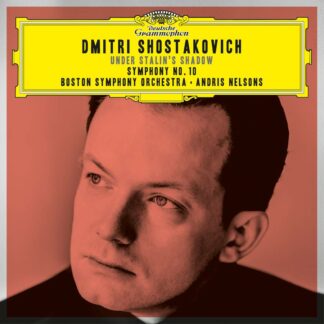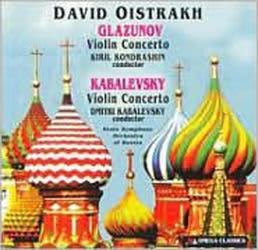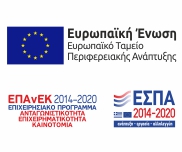Περιγραφή
Καλλιτέχνες
|
CLEMENS VON REUSNER · ELECTROACOUSTIC WORKS Clemens von Reusner creates acousmatic worlds in which natural and synthetic objects exist side by side, in sound forms and in movements. He works with sounds that he dissects, puts back together, places in rooms out of which they flow or into which they grow, and offers the ear a “clear view”. Human beings form pictures of aggregated states, changes, and movements. Their experience tells them things are fast or slow, collide, and, as a result, burst into a thousand pieces. Analogies to life situations become apparent: the effort to achieve something, failure, success. Movements as braking, accelerating, persisting. No movement remains without consequences. Organisms, their development and their decay are encountered with the passage of time. Sounds organically evolve from an initial sound, appearing in derivatives, modifications and relationships, and thus lead back to the nucleus of the composition in movements full of suspense, between gestural and textural structure. Consequently, in the compositions of Clemens von Reusner the end of something is always the beginning of something new. Impacts create new objects. These objects branch out, change color, wander off, unite. The union of objects makes the number of objects decrease again. The original objects disappear, the newly created ones develop autonomous powers. Even iteration, often the bogey of electroacoustic music, is transformed into a living thing. The localization of the sounds takes place not only in space but also in the tonal spectrum, so that it becomes possible to perceive the simultaneous existence of the musical figures with their transformations and movements, their contrasts, their synergies. Clemens von Reusner works with different programs that make free work possible in the realm of sounds, where samples, synthesis and resynthesis work together, develop, accelerate and slow each other down, always with great determination. Thus, the material opens itself up in a clear musical language with a strong phrase structure enabling expansive arcs to form. Alongside all the new ideas, traditional models such as exposition, imitation or recapitulation are not absent here. True innovation is always based on the existing. Anamorphosis, Definierte Lastbedingung, KRIT and are genuine eight-channel productions. Attention to compositional sense and sonic transparency is always maintained in the stereo versions, even though the ambiance of the sound movements achieved by the ambisonic procedure only opens up completely in the 5-channel versions of the SACD, and especially in the 8-channel concert version. Michael Hoeldke Translation: Matthew Harris Anamorphosis (2018) involves the processing of two contrasting structures, which are emphasized in the first part of the composition. Both are based on the brief sound of a wooden door which, however, does not appear in its original form in the work. The structural nature of this sound, a rapid sequence of short repetitions varying in length, leads to the spectral and temporal variations of these structures, which are tonally developed in the second and third, more reprise-like sections. Anamorphosis is dedicated to the artist Ernst von Hopffgarten. HO (2008) was achieved by means of additive sound synthesis using the “Csound” audio programming language. Percussive sound islands, spatial motion, modulated noise. Reverberation in a wide space. A shifting surface. Deconstruction of the sound islands, modification, compression and repetition. HO received an award at the MUSICA NOVA 2009 Composition Competition of the Society for Electroacoustic Music of the Czech Republic in Prague, and was premiered there in December 2009. Definierte Lastbedingung (Defined Load Condition, 2016) works with the sound of electromagnetic fields generated by electrical equipment. Recorded with a special microphone, this sound material has hardly any of what is otherwise typical for “musical” sound. There is no spatial depth, nor any dynamics. In their identity as noise, the sounds are static, although they are internally mobile. They usually seem awkward, even hermetic such as the familiar humming of the mains. Using the resources of the electronic studio, they are examined in their structure and designed anew. The work featured as a German contribution to the World Music Days for New Music in Vancouver in 2017 and was nominated for the Prix Phonurgia in France in 2017. Dry Friction (2012) is based on the sound of metallic surfaces. Close sound affinities arise from spectral sound processing and progressive change in the sense of motivic-thematic work which leads through different manifestations of friction. The world premiere was at the International Computer Music Conference (ICMC) in Ljubljana, Slovenia in 2012. In Sanskrit, KRIT (2018) means “cut into pieces”, “split”, “twist a thread”, or “spin”, but also “play” and “perform successfully”. The basis of KRIT is a chaotic underlying sound that is cut into pieces and rebuilt in many variations. In the course of the composition, chaotic but simultaneously uniform, as well as isolated but extended manifestations of this sound are developed and become audible in different degrees of density and spatiality. Sphären der Untätigkeit (Spheres of Inactivity, 2013) is based on the repeatedly filtered sub-harmonic development of a synthetic frequency-modulated sound whose spectral nature is based on the proportions of the golden mean and which regains its original form only at the end of the work. The individual sound forms combine in a slow wave motion. In contrast to this, impulses that are radically changed in their time and in their tonal nature appear in different acoustic spaces. The world premiere was at the 2013 Elektro Arts Festival in Cluji, Romania. Topos Concrete (2014): The Greek word “topos” means area and is a rugged and inhospitable landscape with mountains and valleys, although it appears smooth and even from a distance. Concrete is a building material, a dry powder consisting of sand, granulated stones and cement as a binder – dusty, chaotic. Mixed with water, concrete becomes flexible and fluid, and in the metamorphosis resulting from dehydration it becomes dry again, and is firm and fixed in any chosen shape. Working with this inherent granularity and fluidity, as well as solidity and varying designed spaces was the guiding principle in the development of the composition. To make solidified concrete audible, various objects made of glass, metal, paper, plastic, stone, and wood were drawn along the floor – like an oversized stylus of a record player. Using contact microphones, the resonant movements of the objects were recorded. Topos Concrete is based on these sounds with their rich acoustic spectra and countless individual sound gestures and textures, which, by means of electroacoustic music, are the building material for the composition. This work was a finalist at the 2014 MUSICA NOVA International Electronic Music Competition in Prague. Clemens von Reusner Translation: Matthew Harris |









